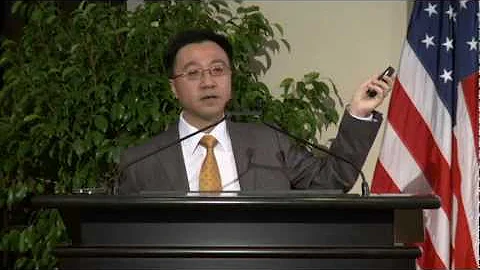Now everyone knows about chips, and they also know that chips are becoming more and more important. Without chips, our life and work are almost difficult to move forward, but everyone may not have a deeper understanding of chips. Although the current chip technology has been developing for more than half a century, it has not changed much in core technologies. It is just constantly upgrading. For example, in improving the performance of chips, it has long been relying on more advanced manufacturing processes, which requires further dependence on the more advanced lithography machine .

So if you look at the development of traditional silicon electronic chips, it is actually the development of lithography machines, which makes lithography machines the core of the chip industry. However, as the manufacturing of advanced lithography machines becomes more and more difficult, even ASML has stated that lithography technology may have come to an end, and the cost is getting higher and higher, so high that even Apple has been under great pressure. This year, it has not adopted 3 nanometers, but adopted the transition technology 4 nanometers. Therefore, whether from the future development of chips or economic benefits, it is necessary to plan the next generation of chip technologies.
This year's Nobel Prize in Physics was awarded to scientists who have made outstanding contributions to quantum technology. From this point, it can be seen that quantum technology has become increasingly important and has begun to come to the forefront. In fact, the next generation of chip technology, namely quantum computing or quantum chip , the development of quantum chips is still in the early stage of exploration, and it is actually also a stage of accumulating technical barriers. When laying a solid foundation at this stage, there is more hope to achieve the leading position in the future.

and Huawei has been constantly developing in this field. I believe many friends know that Huawei attaches great importance to R&D, especially this year Huawei's R&D expenses account for about 25% of revenue, which is about four times that of Apple. The R&D expenses exceeded 110 billion. However, it has to be said that these 110 billion are not wasted. Now Huawei has brought us good news, and it is good news for quantum chips.
According to media reports, Huawei has released a superconducting quantum chip patent. The main function of this patent technology is to reduce crosstalk between qubit . So what does this mean? In fact, it is not difficult to understand that the computing power of quantum chips depends on quantum entanglement, and the more quantum bits, the stronger the computing power. However, in the process of qubit implementation, crosstalk will occur, which affects the calculation, so crosstalk can be understood as affecting the calculation accuracy of the quantum bit ratio.

This is just like Intel achieved ultra-high main frequency on the Pentium 4 processor back then, and its computing power was greatly improved, but the calculation accuracy was reduced. The chip provides us with computing services. The calculation is not fast and it still needs to be accurate. So now everyone should understand the importance of this technology. In fact, solving the crosstalk problem of qubits has always been a key issue in the quantum computing industry. Therefore, Huawei undoubtedly took over the key technology of quantum chips this time. There was a sound before
that quantum chips could not require lithography machines, but in fact, this is not the case. As mentioned above, the core of the silicon electronic chip era was lithography machines. In the era of quantum chips, lithography machines were no longer at the core position, but it did not mean that lithography machines could not be used. It was just that the requirements for lithography machines were greatly reduced and they were no longer dependent on them as before. We can completely provide such lithography machines independently.

In fact, in terms of chips, Huawei has always been walking on four legs. One is the current silicon electronic chip, which is still mainstream in this regard, so Huawei has been conducting research and development. For example, the chip stacking technology previously announced, which can also reduce the use of advanced processes to a certain extent; the second is silicon photonic chip, which still uses semiconductors as raw materials, but the utilization characteristics are different. Huawei's R&D center in the UK is currently focusing on this technology.
The third is optical quantum chip. Optical quantum chips and silicon photonic chips are not the same concept. Moreover, Huawei's patents published this time belong to the fourth type, that is, superconducting quantum chips. This technology is also different from optical quantum chips. Relatively speaking, superconducting quantum chips are less difficult. This is also a technology that Europe and the United States are focusing on. The advantage is that they can realize general computing, but their computing performance is not as good as optical quantum . Optical quantum also has its disadvantages, that is, they can only be used as dedicated chips.

So in summary, the reason why Huawei invests over 100 billion in R&D funds every year is because many technologies are basic technologies and core technologies. Academician Ni Guangnan said before that you should give up fantasy. Core technologies cannot be bought or requested. Now it is true. If you think it is reasonable, thank you for giving it a thumbs up and reading.











